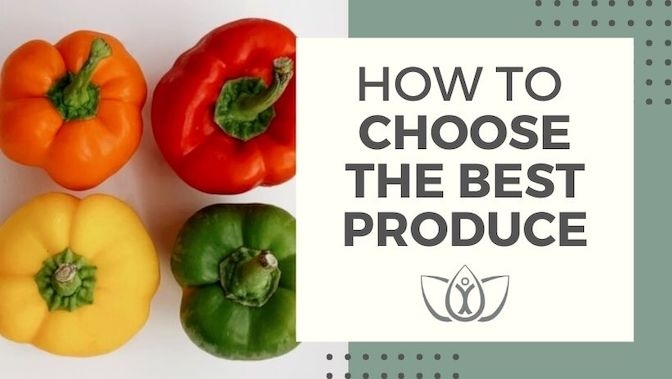It's that time of year when farmers markets pop up on country roadsides and produce is in delicious abundance. Fresh, juicy watermelons and golden, ripe corn on the cob await our consumption. Summertime makes it easy to enjoy the best kinds of healthy foods.
The tricky part is deciding which onion or bunch of leafy greens is going to give you the best flavor. How do you know when all of this fresh produce is actually going to taste as good as it looks? While this question has a wide variety of answers due to the uniqueness of each food, we've compiled a list of some summer favorites, and tips for ensuring you bring home the best of the best.
How to Choose the Best Produce
Watermelon
When picking up a watermelon, you should look for a flat brown spot that has brown veins called "stretch marks." The brown spot means it had adequate time sitting in the sun. The veins indicate that water and minerals from the soil have been absorbed, and the result is a flavor that is sweet and delicious.
Citrus
All of your citrus should be sweetly fragrant. They should also feel firm to the touch and not have any soft, mushy spots. The heavier the fruit, the more juice it contains. Also, choose the citrus that has a smoother peel over the heavily dimpled fruit.
Strawberries
Once a strawberry is picked, it doesn't continue to ripen. When choosing your berries, pick the reddest and the plumpest. The overall size doesn't matter as long as the berries do no look dry and shriveled. Fresh, green leaves are another indication of a fresh strawberry.
Tomatoes
Local, in-season tomatoes are an entire class above what you'll find in the grocery store any other time of the year. While fresh tomatoes have a shorter shelf life, the flavor is well worth it. A tomato should be free of bruising, deep cracks, or wrinkled skin. It should also be heavier than it appears, with a sweet, earthy scent right around its stem.
Bell Peppers
These sweet, colorful veggies should be firm with taut and glossy skin. Watch out for soft spots or blemishes. The juiciest peppers will be heavy for their size with thick walls.
Corn
Pulling the husks back in store is expected and even encouraged. It's the only way to know for sure you're choosing the right cob. The kernels should look plump and be even in color. If they look dried out and shriveled, put the cob back and start peeling back another.
Onions
Onions should feel firm and be free of any soft, wet spots. Black spots on the onion or green sprouts coming out of the top indicate an onion you don't want to take home with you. They should have thin skins with tight, dry necks. Like several other produce options, onions should feel heavier than they appear for maximum juiciness.
Leafy Greens
Leafy greens is a broad term for a large variety of produce. But the general rule is to look for greens that are the color they should be, whether that's bright green like arugula or dark green like kale. Any wilting or browned edges means they have lived past their prime.
What To Do With the Best Produce
Are you curious to learn more about healthy produce? Do you have a passion for nutrition and its impact on our overall health? Satisfy your curiosities and pursue your passions by enrolling in our Certified Nutritional Consultant program at Trinity School of Natural Health.


